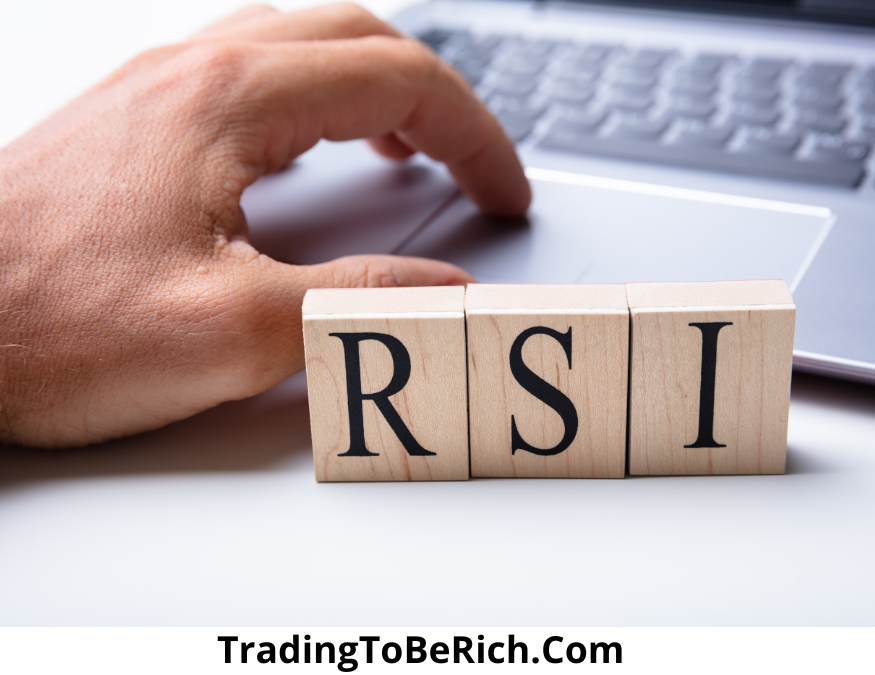What is a Good RSI for a Stock ? A Comprehensive Guide
In the world of trading, the Relative Strength Index (RSI) is a powerful tool that can help you make informed decisions. Whether you’re a seasoned trader or just starting out, understanding what a good RSI for a stock is, the ideal RSI setting for stocks, and interpreting RSI signals can significantly enhance your trading strategies.
In this article, we’ll dive deep into the RSI, explore its settings, and discuss whether an RSI below 30 is a buy signal. We’ll also look at what RSI levels are considered too high and how to use this information effectively in your trading.
Understanding the RSI
What is RSI?
The Relative Strength Index (RSI) is a momentum oscillator that measures the speed and change of price movements. It is primarily used to identify overbought or oversold conditions in an asset. The RSI is calculated using the average gains and losses over a specified period, typically 14 periods. It is plotted on a scale from 0 to 100, with levels above 70 indicating overbought conditions and levels below 30 indicating oversold conditions.

What is a Good RSI for a Stock ?
Ideal RSI Settings for Stocks
When it comes to setting the RSI for stocks, the standard period is 14. This setting is widely accepted and provides a good balance between sensitivity and reliability. However, depending on your trading style and the specific asset you’re trading, you might want to adjust the RSI setting.
Short-Term Trading
For short-term trading strategies, such as scalping, you might want to use a shorter RSI period, like 9 or 7. This makes the RSI more sensitive to price changes and can generate more frequent signals, which is beneficial for quick trades.
Scalping trading: A beginner’s guide to HFT strategies
Long-Term Trading
For long-term trading strategies, a longer RSI period, like 21 or 28, can be more suitable. This setting makes the RSI less sensitive to short-term price fluctuations and can provide more reliable signals for longer-term trends.
Adjusting RSI Settings
Adjusting the RSI settings can help you fine-tune your trading strategies. For example, if you’re trading a highly volatile asset like the USD/JPY, you might want to use a shorter RSI period to capture quick price movements. Conversely, for a less volatile asset, a longer RSI period can help filter out noise and provide more reliable signals.
Is RSI Below 30 a Buy Signal ?
Understanding Oversold Conditions
An RSI below 30 is generally considered an oversold condition, which can be a buy signal. When the RSI drops below 30, it indicates that the asset has been overly sold and may be due for a rebound. However, it’s important to consider other factors before making a trading decision.
Confirming the Buy Signal
To confirm whether an RSI below 30 is a buy signal, you can use additional indicators and analysis:
- Price Action: Look at the price action to see if there are any bullish patterns or reversal signals.
- Volume: Check the trading volume to see if there is increased buying activity, which can confirm a potential reversal.
- Other Indicators: Use other indicators like MACD or Bollinger Bands to confirm the buy signal. For example, a bullish MACD crossover combined with an RSI below 30 can be a strong buy signal.
Example Strategy
Let’s look at an example strategy using an RSI below 30 as a buy signal:
- Identify Oversold Condition: Wait for the RSI to drop below 30 on your preferred timeframe.
- Confirm with Price Action: Look for bullish price action patterns, such as a hammer or a bullish engulfing pattern.
- Check Volume: Ensure that the trading volume is increasing, indicating buying activity.
- Use Additional Indicators: Confirm the buy signal with other indicators like MACD or Bollinger Bands.
- Enter the Trade: Place a buy order and set your stop-loss and take-profit levels based on your risk management strategy.

What RSI is Too High?
Understanding Overbought Conditions
An RSI above 70 is generally considered an overbought condition, which can be a sell signal. When the RSI rises above 70, it indicates that the asset has been overly bought and may be due for a correction.
However, it’s important to consider other factors before making a trading decision.
Confirming the Sell Signal
To confirm whether an RSI above 70 is a sell signal, you can use additional indicators and analysis:
- Price Action: Look at the price action to see if there are any bearish patterns or reversal signals.
- Volume: Check the trading volume to see if there is increased selling activity, which can confirm a potential reversal.
- Other Indicators: Use other indicators like MACD or Bollinger Bands to confirm the sell signal. For example, a bearish MACD crossover combined with an RSI above 70 can be a strong sell signal.
Example Strategy
Let’s look at an example strategy using an RSI above 70 as a sell signal:
- Identify Overbought Condition: Wait for the RSI to rise above 70 on your preferred timeframe.
- Confirm with Price Action: Look for bearish price action patterns, such as a shooting star or a bearish engulfing pattern.
- Check Volume: Ensure that the trading volume is increasing, indicating selling activity.
- Use Additional Indicators: Confirm the sell signal with other indicators like MACD or Bollinger Bands.
- Enter the Trade: Place a sell order and set your stop-loss and take-profit levels based on your risk management strategy.
Does RSI Work for Day Trading? A Comprehensive Guide
Integrating RSI into Your Trading Strategies
Combining RSI with Other Indicators
To enhance your trading strategies, you can combine RSI with other indicators. Here are some effective combinations:
- RSI and MACD: Use the MACD to identify the overall trend and the RSI to confirm overbought or oversold conditions within that trend. Customize your MACD settings to suit your trading style and timeframe.
- RSI and Bollinger Bands: Use Bollinger Bands to identify potential trend reversals and breakouts. Combine this with RSI to confirm overbought or oversold conditions.
- RSI and Volume: Use volume analysis to confirm the strength of the RSI signals. Increased volume can indicate stronger buying or selling activity, adding confidence to your trades.
Automated Trading with RSI
If you’re into algorithmic trading, you can integrate RSI into your trading algorithms. Automated trading systems can monitor the RSI and other indicators in real-time, generating buy and sell signals based on predefined criteria. This can help you take advantage of trading opportunities more efficiently.
Example of Automated Trading Strategy
- Set RSI Parameters: Define the RSI parameters, such as the period and overbought/oversold levels.
- Integrate Other Indicators: Incorporate other indicators like MACD, Bollinger Bands, and volume analysis into your algorithm.
- Define Trading Rules: Establish rules for entering and exiting trades based on the RSI and other indicators.
- Backtest the Strategy: Test the strategy using historical data to ensure its effectiveness.
- Monitor and Adjust: Continuously monitor the performance of the strategy and make adjustments as needed.
Demystifying trading algo : implementing, and optimizing
Conclusion
The RSI is a powerful tool that can significantly enhance your trading strategies. Understanding what a good RSI for a stock is, the ideal RSI setting for stocks, and interpreting RSI signals can help you make more informed trading decisions. Whether you’re using an RSI below 30 as a buy signal or an RSI above 70 as a sell signal, combining RSI with other indicators and analysis can provide a more comprehensive view of the market.
Remember, the key to successful trading is not just about choosing the right indicators, but also about understanding how to use them effectively. Always combine technical analysis with fundamental analysis and risk management to maximize your trading potential.
So, go ahead and experiment with these strategies. With practice and patience, you’ll find the combination that works best for you. Happy trading!

